Welcome to the wonderful world of functional mushrooms! If you are familiar with your humble edibles, such as white button or Swiss brown, then it’s time to make room for some exotic-sounding newcomers you never knew were missing from your life!
Why Functional Mushrooms?
Mushrooms, known and loved for their unique taste and as a nutritive food for eons, have also played a vital role in the healing traditions of many cultures for thousands of years.
Evidence exists that suggests ancient, early humans — the Neanderthal — who were alive some 50,000+ years ago ate various mushrooms. Fungi was also found in a pouch on the remains of ‘Otzi the Iceman’ who lived over 5,000 years ago. Within the writings of Hippocrates, some 2,400 years ago, and the Chinese alchemist Tao Hongjing around 1,500 years ago, suggest that mushrooms were being used for health purposes.
More recently mushrooms have re-entered popular awareness due to emerging research on the health and performance potential they offer, as well as attention given from life- and bio-hackers around the world.
There are many varieties of mushrooms available. Here, we’ll review a few of the most popular functional mushrooms used as supplements and which ones might be best for you.
Lion’s Mane – think ‘brain’!
Lion’s Mane (Hericium erinaceus) is a mushroom native to North America, Europe and Asia that has the distinctive look of a lion’s mane stuck to the side of a tree. It has a strong history of use in the traditional medical systems of China, Korea and Japan. More recently, it is increasingly sought after in recognition of its support for brain, cognition and neurological health.
Uniquely, it has been demonstrated to support the brain’s production of ‘Nerve Growth Factor’ (NGF) [1], a special protein found in the brain that is essential to learning. NGF functions to help nerves and brains cells grow and repair [2-7]. Studies support the role of Lion’s Mane in cognitive function [8] – the ability to think and focus – as well as supporting physical performance [9].
Typically, brain and nerve cells don’t repair very well, and so, if you’ve damaged yours through trauma, toxins or even ‘high living’, Lion’s Mane might be right for you. Like many functional mushrooms, it supports the body’s antioxidant pathways and how the body processes free radicals [10,11]. Plus, Lion’s Mane also supports the metabolic aspects of that ‘high living’ lifestyle through healthy liver [12-14], blood lipids [15-17], and immune system function [18].
Cordyceps for performance
Cordyceps (Cordyceps sinensis) originate in the mountainous regions of the Tibetan plateau of the Himalayas, and are much prized in the traditional Chinese and Tibetan health systems for health preservation and invigoration.
In the wild, Cordyceps is an endo-parasitic fungus that feeds on the body of its host, the Ghost Moth larvae. From here, the mushroom (or fruiting body) ‘buds’ forming the rare and extremely expensive functional mushroom. Fortunately, Cordyceps is now more commonly cultivated (no caterpillars were harmed in the making of this product!) allowing for greater accessibility, lower cost and ethical access to this wonderful mushroom.
Cordyceps has powerful performance tonic properties, making it popular with anyone seeking greater endurance, stamina and energy reserves. Popular with performance athletes, it also makes its mark supporting fatigue resistance in the elderly [19], and the health and vitality of everyone in between.
Reishi – the general health tonic
Reishi (Ganoderma sp.) is considered one of the most supportive of all the nourishing and tonifying substances used in Traditional Chinese Medicine (TCM). In China, Reishi mushrooms are known as Lingzhi, and are a potent symbol of spiritual strength, success and longevity – even being dubbed the ‘essence of immortality’ [20]!
This may be why many experts consider Reishi to be the ‘general purpose’ mushroom for supporting all round good-health. It has great affinity for the immune system, but also helps support healthy brain and sleep, supporting the stress response and energy production, as well as providing antioxidant support [21-25].
Many animal and cell-based studies support Reishi’s antioxidant potential to help the body keep oxidative stress that ages our cells in healthy balance. Human studies have also demonstrated this action, and provide evidence of cardiovascular, metabolic and liver support [26,27].
Chaga for immune health
Chaga mushrooms (Inonutus obliquus) grow on trees in colder regions across Northern Europe, preferring trees, particularly birch, as their host. They form a dark charcoal-black coloured mass on trees, often referred to as a ‘conk’. This mushroom has been well used in Northern European folk health systems and, on account of its bitter taste, was frequently brewed as a tea.
Chaga, like many functional mushrooms, is rich in a particular type of soluble fibre polysaccharide called Beta Glucan. These compounds have been well studied in support of immune health and wellness.
Whilst there haven’t been any studies of the effect of Chaga on people’s health just yet, there is promising cellular and animal study data available. In-vitro (test tube) studies demonstrate Chaga mushrooms may help support the body’s natural clearance of microbes, support optimal cytokine balance and maintain the body’s free radical defence system against a range of stressors such as UV radiation, heavy metals and oxidised fatty acids [28-30]. Animal studies also suggest that Chaga may play a role in the support of healthy liver function and cholesterol levels.
Making mushrooms part of your daily routine
Fortunately, the body of research is growing on the health-supporting properties of functional mushrooms. When we consider the general absence of negative effects from these foods when traditionally used, and the positive case evidence stretching back millennia, it makes good sense to add mushrooms into your diet or supplement regime.
So how can you use mushrooms?
- In cooking
- In smoothies (mushroom powders or liquid extracts)
- As a herbal ‘elixir’ or tonic
- As part of a coffee or tea blend
- As capsule based supplements
How do I personally use mushrooms?
- In slow cooking (make sure you drink the broth!)
- In smoothies: new favourites to try are Chaga and Lion’s Mane extracts
- As coffee: Lion’s Mane or Cordyceps in the morning are great a go-to!
- As elixirs: Chaga and Reishi at night to support restful sleep
Try some of these wonderful mushroom-based products and reap the rewards of mushroom magic for yourself!
References:
[1] P-L, Naidu M, Sabaratnam V, Wong K-H, David RP, Kuppusamy UR, et al. Neurotrophic Properties of the Lion’s Mane Medicinal Mushroom, <i>Hericium erinaceus</i> (Higher Basidiomycetes) from Malaysia. 2013;15(6):539-54.
[2] Park YS, Lee HS, Won MH, Lee JH, Lee SY, Lee HY. Effect of an exo-polysaccharide from the culture broth of Hericium erinaceus on enhancement of growth and differentiation of rat adrenal nerve cells. Cytotechnology. 2002;39(3):155
[3] Nagano M, Shimizu K, Kondo R, Hayashi C, Sato D, Kitagawa K, et al. Reduction of depression and anxiety by 4 weeks <I>Hericium erinaceus</I> intake. Biomedical Research. 2010;31(4):231-7.
[4] Wong K-H, Vikineswary S, Naidu M, Keynes R. Activity of Aqueous Extracts of Lion’s Mane Mushroom <i>Hericium erinaceus</i> (Bull.: Fr.) Pers. (Aphyllophoromycetideae) on the Neural Cell Line NG108-15. 2007;9(1):57-65.
[5] Wong K-H, Naidu M, David P, Abdulla MA, Abdullah N, Kuppusamy UR, et al. Peripheral Nerve Regeneration Following Crush Injury to Rat Peroneal Nerve by Aqueous Extract of Medicinal Mushroom Hericium erinaceus (Bull.: Fr) Pers. (Aphyllophoromycetideae). Evidence-Based Complementary and Alternative Medicine. 2011;2011:10.
[6] Wong K-H, Naidu M, David RP, Abdulla MA, Kuppusamy UR. Functional Recovery Enhancement Following Injury to Rodent Peroneal Nerve by Lion’s Mane Mushroom, <i>Hericium erinaceus</i> (Bull.: Fr.) Pers. (Aphyllophoromycetideae). 2009;11(3):225-36.
[7] Moldavan M, Grygansky AP, Kolotushkina OV, Kirchhoff B, Skibo GG, Pedarzani P. Neurotropic and Trophic Action of Lion’s Mane Mushroom <i>Hericium erinaceus</i> (Bull.: Fr.) Pers. (Aphyllophoromycetideae) Extracts on Nerve Cells <i>in Vitro</i>. 2007;9(1):15-28.
[8] Mori K, Inatomi S, Ouchi K, Azumi Y, Tuchida T. Improving effects of the mushroom Yamabushitake (Hericium erinaceus) on mild cognitive impairment: a double-blind placebo-controlled clinical trial. Phytotherapy Research. 2009;23(3):367-72.
[9] Liu J, Du C, Wang Y, Yu Z. Anti-fatigue activities of polysaccharides extracted from Hericium erinaceus. Experimental and therapeutic medicine. 2015;9(2):483-7.
[10] Kim Y-O, Lee S-W, Oh C-H, Rhee Y-H. Hericium erinaceus suppresses LPS-induced pro-inflammation gene activation in RAW264.7 macrophages. Immunopharmacology and Immunotoxicology. 2012;34(3):504-12.
[11] Han Z-H, Ye J-M, Wang G-F. Evaluation of in vivo antioxidant activity of Hericium erinaceus polysaccharides. International Journal of Biological Macromolecules. 2013;52:66-71.
[12] Zhang Z, Lv G, Pan H, Pandey A, He W, Fan L. Antioxidant and hepatoprotective potential of endo-polysaccharides from Hericium erinaceus grown on tofu whey. International Journal of Biological Macromolecules. 2012;51(5):1140-6.
[13] Kim SP, Moon E, Nam SH, Friedman M. Hericium erinaceus Mushroom Extracts Protect Infected Mice against Salmonella Typhimurium-Induced Liver Damage and Mortality by Stimulation of Innate Immune Cells. Journal of Agricultural and Food Chemistry. 2012;60(22):5590-6.
[14] Hao L, Xie Y, Wu G, Cheng A, Liu X, Zheng R, et al. Protective Effect of Hericium erinaceus on Alcohol Induced Hepatotoxicity in Mice. Evidence-Based Complementary and Alternative Medicine. 2015;2015:5.
[15] Hiwatashi K, Kosaka Y, Suzuki N, Hata K, Mukaiyama T, Sakamoto K, et al. Yamabushitake Mushroom (Hericium erinaceus) Improved Lipid Metabolism in Mice Fed a High-Fat Diet. Bioscience, Biotechnology, and Biochemistry. 2010;74(7):1447-51.
[16] Yang B-K, Park J-B, Song C-H. Hypolipidemic Effect of an Exo-biopolymer Produced from a Submerged Mycelial Culture of Hericium erinaceus. Bioscience, Biotechnology, and Biochemistry. 2003;67(6):1292-8.
[17] Kim SP, Moon E, Nam SH, Friedman M. Hericium erinaceus Mushroom Extracts Protect Infected Mice against Salmonella Typhimurium-Induced Liver Damage and Mortality by Stimulation of Innate Immune Cells. Journal of Agricultural and Food Chemistry. 2012;60(22):5590-6.
[18] Sheu S-C, Lyu Y, Lee M-S, Cheng J-H. Immunomodulatory effects of polysaccharides isolated from Hericium erinaceus on dendritic cells. Process Biochemistry. 2013;48(9):1402-8.
[19] Yi X, Xi-zhen H, Jia-shi Z. Randomized double-blind placebo-controlled clinical trial and assessment of fermentation product of Cordyceps sinensis (Cs-4) in enhancing aerobic capacity and respiratory function of the healthy elderly volunteers. Chinese Journal of Integrative Medicine. 2004;10(3):187-92.
[20] Wachtel-Galor S, Yuen J, Buswell JA, et al. (2011). Ganoderma lucidum (Lingzhi or Reishi): A Medicinal Mushroom. In: Benzie IFF, Wachtel-Galor S, editors. Herbal Medicine: Biomolecular and Clinical Aspects. (2nd edition. Chapter 9) Boca Raton (FL): CRC Press/Taylor & Francis.
[21] Reishi [Internet]. 2013.
[22] Zhou ZY, Tang YP, Xiang J, Wua P, Jin HM, Wang Z, et al. Neuroprotective effects of water-soluble Ganoderma lucidum polysaccharides on cerebral ischemic injury in rats. J Ethnopharmacol. 2010;131(1):154-64.
[23] Gokce EC, Kahveci R, Atanur OM, Gurer B, Aksoy N, Gokce A, et al. Neuroprotective effects of Ganoderma lucidum polysaccharides against traumatic spinal cord injury in rats. Injury. 2015;46(11):2146-55.
[24] Soccol CR, Bissoqui LY, Rodrigues C, Rubel R, Sella SRBR, Leifa F, et al. Pharmacological Properties of Biocompounds from Spores of the Lingzhi or Reishi Medicinal Mushroom <i>Ganoderma lucidum</i> (Agaricomycetes): A Review. 2016;18(9):757-67.
[25] Santesso N, Wieland LS. A Summary of a Cochrane Review: Ganoderma lucidum (Reishi mushroom) for the treatment of cancer. European journal of integrative medicine. 2016;8(5):619-20.
[26] Chiu HF, Fu HY, Lu YY, Han YC, Shen YC, Venkatakrishnan K, et al. Triterpenoids and polysaccharide peptides-enriched Ganoderma lucidum: a randomized, double-blind placebo-controlled crossover study of its antioxidation and hepatoprotective efficacy in healthy volunteers. Pharm Biol. 2017;55(1):1041-6.
[27] Wachtel-Galor S, Yuen J, Buswell JA, et al. (2011). Ganoderma lucidum (Lingzhi or Reishi): A Medicinal Mushroom. In: Benzie IFF, Wachtel-Galor S, editors. Herbal Medicine: Biomolecular and Clinical Aspects. (2nd edition. Chapter 9) Boca Raton (FL): CRC Press/Taylor & Francis.
[28] Ham S-S, Kim S-H, Moon S-Y, Chung MJ, Cui C-B, Han E-K, et al. Antimutagenic effects of subfractions of Chaga mushroom (Inonotus obliquus) extract. Mutation Research/Genetic Toxicology and Environmental Mutagenesis. 2009;672(1):55-9.
[29] Najafzadeh M, Reynolds PD, Baumgartner A, Jerwood D, Anderson D. Chaga mushroom extract inhibits oxidative DNA damage in lymphocytes of patients with inflammatory bowel disease. BioFactors. 2008;31(3‐4):191-200.
[30] Song H-S, Lee Y-J, Kim S-K, Moon K, Moon W, Kim D, et al. Downregulatory Effect of AGI-1120 (Ñß-Glucosidase Inhibitor) and Chaga Mushroom (Inonotus obliquus) on Cellular NF-kB Activation and Their Antioxidant Activity. Korean Journal of Phamacognosy. 2004.



